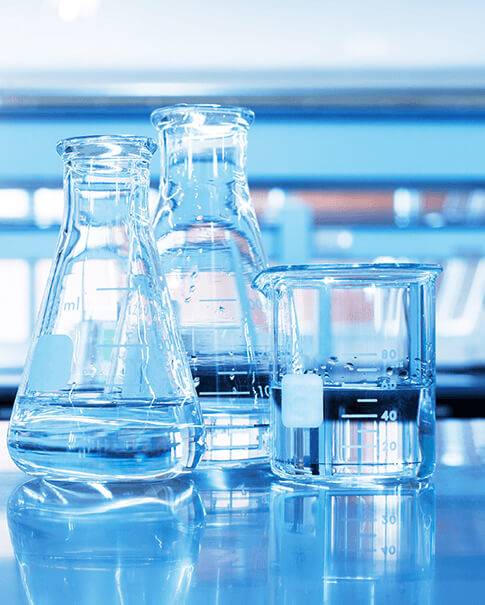What Are You Looking For?

Common Synthesis Methods of Polyacrylamide
Aug 28, 2024Polyacrylamide (PAM) is a synthetic polymer that is primarily used for its flocculation, coagulation, and viscosity-enhancing properties. The role of polyacrylamide polymer varies depending on the application, but some of its main functions include:
1. Flocculation and Coagulation: Polyacrylamide is widely used in water and wastewater treatment processes to facilitate the aggregation and removal of suspended particles, organic matter, and colloidal substances. It acts as a flocculant or coagulant aid by binding to the particles and facilitating their bridging and agglomeration, leading to the formation of larger flocs that can be easily separated from the liquid phase through processes such as sedimentation or filtration.
2. Thickening and Viscosity Modification: Polyacrylamide is known for its ability to increase the viscosity and improve the rheological properties of aqueous solutions. It forms a flexible and soluble polymer network in water, resulting in increased solution viscosity. This property is beneficial in various industries such as cosmetics, textiles, and petroleum, where PAM is used as a thickener, binder, or stabilizer to enhance the texture, flow, or stability of products.
3. Drag Reduction/Anti-friction Agent: In certain industrial applications, such as oil transportation through pipelines or irrigation systems, the presence of turbulent flow can lead to increased energy consumption and frictional losses. Polyacrylamide can be used as a drag-reducing agent or anti-friction additive to decrease the flow resistance and improve the efficiency of fluid transport. The polymer acts by modifying the flow patterns and reducing turbulence in the system.
4. Erosion Control and Soil Stabilization: Polyacrylamide is employed in agriculture and land management practices to reduce soil erosion, improve soil structure, and enhance sediment control. PAM can bind soil particles together, increasing their cohesion and preventing erosion caused by water runoff. It can also aid in water infiltration, soil moisture retention, and seed germination in arid or degraded soil conditions.
5. Enhanced Oil Recovery: In the petroleum industry, polyacrylamide is utilized for enhanced oil recovery (EOR) purposes. PAM can be injected into oil reservoirs to improve the sweep efficiency and displacement of oil from porous rock formations. It helps reduce the mobility of injected water, create a favorable flow profile, and increase the microscopic displacement efficiency, resulting in enhanced oil production.
6. Papermaking and Textile Processing: Polyacrylamide is commonly used in the paper and pulp industry as a retention and drainage aid. It improves the retention of fine particles, fillers, and fibers in the papermaking process, leading to improved paper quality and increased production efficiency. PAM also finds applications in textile processing, where it can act as a sizing agent, dye-fixing agent, or lubricating agent to enhance the manufacturing processes and properties of textiles.
These are some of the primary roles of polyacrylamide polymer across various industries and applications. The specific role and performance requirements may vary depending on the intended use and the desired outcome in each case.
Regarding the synthesis methods of polyacrylamide, there are generally two main approaches:
1. Solution Polymerization: This method involves the polymerization of acrylamide monomers in an aqueous solution using a chemical initiator, such as ammonium persulfate (APS), and a reducing agent, such as N,N,N',N'-tetramethylethylenediamine (TEMED). The reaction is typically conducted under controlled temperature and pH conditions. Polymerization initiates by the formation of free radicals, which initiate the crosslinking and chain extension of acrylamide monomers to form polyacrylamide chains.
2. Emulsion Polymerization: In this method, acrylamide monomers are dispersed in an oil phase (usually a hydrocarbon) along with an emulsifier and water. The emulsifier facilitates the formation of micelles, which act as reaction vessels for the polymerization. The reaction is initiated by similar free radical initiators as in solution polymerization and proceeds by monomer diffusion to the micelles. The resulting polyacrylamide particles are typically in the form of latex and can be stabilized by the presence of surfactants on their surfaces.
Both of these synthesis methods can be modified to control the molecular weight, charge density, and other properties of the resulting polyacrylamide polymer by adjusting the reaction parameters, monomer concentration, or incorporating additional monomers or crosslinking agents.
It is important to note that the synthesis of polyacrylamide requires proper safety measures and handling practices due to the toxicity of acrylamide monomer. Industrial production of polyacrylamide typically employs strict safety protocols to ensure worker safety and environmental protection.